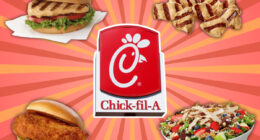The product recommendations in this post are recommendations by the writer and/or expert(s)
interviewed and do not contain affiliate links. Meaning: If you use these links to buy
something, we will not earn a commission.
If you’re a frozen food fan, Trader Joe’s freezer aisle might be one of your go-to destinations. While the store is known for its original product lines, not all of the Trader Joe’s frozen food offerings are created equal when it comes to nutrition. To help you navigate the freezer aisle with your health in mind, we interviewed dietitians to uncover the least healthy frozen food options at this beloved grocery chain. From hidden sodium content to sneaky sugars, our experts reveal the frozen items you may want to think twice about before adding to your shopping cart.
It’s worth noting that not all frozen foods are unhealthy. There are many nutritious choices available at Trader Joe’s too. By being mindful of the ingredients, nutrition facts, and processing methods, you can make better decisions and find frozen foods that align with your health and dietary goals.
When it comes to frozen food options in general, there are a few categories that tend to be less healthy due to their nutritional profile. Here are some of the least healthy frozen food options, generally speaking, that you may want to be cautious of:
- Frozen desserts: Trader Joe’s offers a variety of tempting frozen desserts like ice creams, pies, and cakes. While they may be delicious, many of these desserts are high in added sugars, unhealthy fats, and calories.
- Breaded or fried items: Some frozen products, such as breaded fish sticks, chicken nuggets, or mozzarella sticks, can be convenient choices. However, these items are often heavily processed and high in unhealthy fats.They are best consumed in moderation due to their impact on heart health and overall nutrition balance.
- Frozen pizza: Trader Joe’s offers a range of frozen pizza options, but many of them tend to be high in sodium, saturated fat, and calories. The combination of processed meats, excessive cheese, and refined flour crusts can make these pizzas less healthy.
- Ready-to-eat meals: While Trader Joe’s frozen meals are convenient for quick lunches or dinners, some of them can be less healthy choices due to their sodium content and high levels of fat.
Get ready for some eye-opening insights into the less-than-ideal choices of Trader Joe’s frozen food, so you can make more informed decisions about what ends up in your freezer.
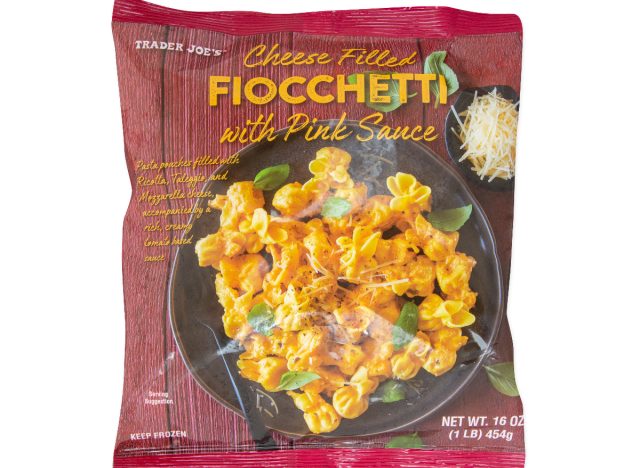

PER 1 CUP (133 G): 290 calories, 17 g fat (10 g saturated fat), 370 mg sodium, 26 g carbs (1 g fiber, 2 g sugar), 8 g protein
“While Trader Joe’s Cheese Filled Fiocchetti with Pink Sauce is a delicious pasta dish, its cream-based sauce is heavy in saturated fat. According to the nutrition label of this frozen entrée, a 1-cup serving contains 50% of a person’s daily recommended saturated fat intake. Frequent overconsumption of saturated fat may result in high blood cholesterol and put you at a greater risk for cardiovascular disease. To cut back on your saturated fat intake while enjoying pasta, opt for sauces that are tomato-based instead of cream-based,” recommendsCatherine Karnatz, MPH, RD.
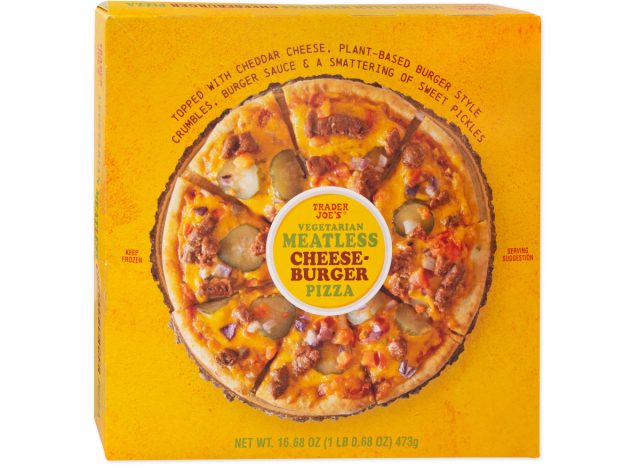

PER 1/3 PIZZA (158 G): 340 calories, 15 g fat (5 g saturated fat), 790 mg sodium, 37 g carbs (3 g fiber, 4 g sugar), 14 g protein
Michelle Rauch, MS, RDN, dietitian of The Actors Fund, shares her take on this healthy-appearing frozen item. “The Vegetarian Meatless Cheeseburger Pizza is not necessarily a healthy choice, despite being meatless. Just one-third of this pizza contains 790 milligrams of sodium, or just over a third of the recommended daily allowance of sodium for those with high blood pressure.”
Instead, look for options with whole grain crusts, low-fat cheese, and more vegetable toppings to improve the nutrition balance.
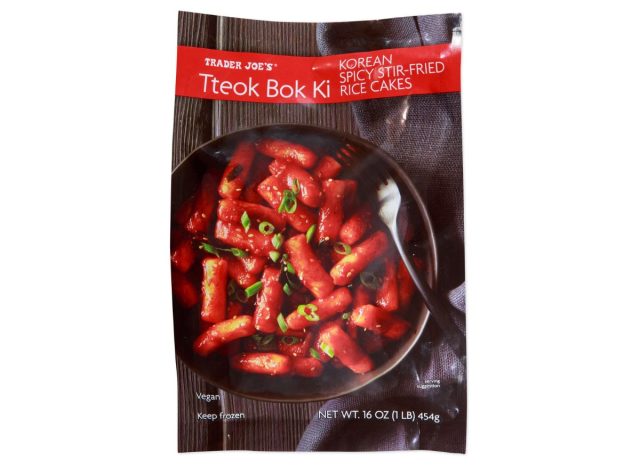

PER 1 CUP (140 G): 280 calories, 1.5 g fat (0 g saturated fat), 420 mg sodium, 61 g carbs (3 g fiber, 10 g sugar), 5 g protein
“Don’t be fooled by the word ‘vegan’ on the package and assume that because it contains no meat that it must be healthier for you,” Rauch adds. “This Korean Dish has 420 milligrams of sodium in just a 1-cup serving, which is equivalent to approximately 20% of the recommended daily allowance of sodium for those without hypertension. In addition to the 10 grams of added sugar from tapioca syrup and brown sugar, a single serving contains a whopping 61 grams of carbohydrates,” Rauch cautions.
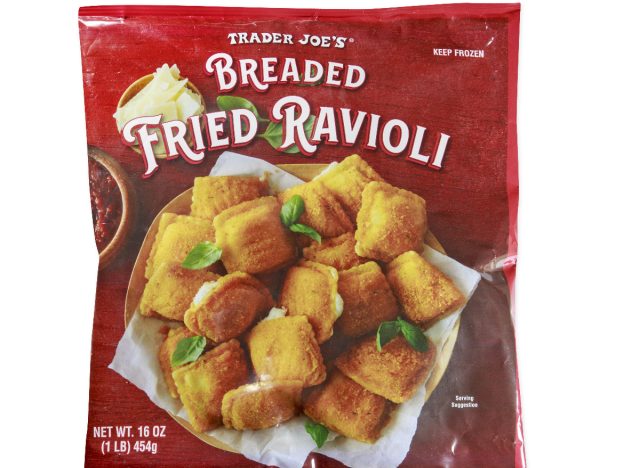

PER 4 RAVIOLI (85 G): 240 calories, 10 g fat (3 g saturated fat), 640 mg sodium, 30 g carbs (3 g fiber, 2 g sugar), 7 g protein
READ RELATED: I Tried the Biscuit Breakfast Sandwiches at McDonald's, Wendy's, & Burger King and One Was Simply Perfect
“Trader Joe’s Breaded Fried Ravioli is a less healthy choice due to its 10 grams of fat, including 3 grams of saturated fat per serving of four ravioli. Excessive consumption of saturated fat can impact heart health. says Maya Oueicek, MBA, RDN. “Moreover, it is high in sodium, containing 630 milligrams per serving, which can lead to increased blood pressure and related potential health concerns. When selecting frozen foods, it’s crucial to be mindful of portion sizes and explore healthier alternatives.”
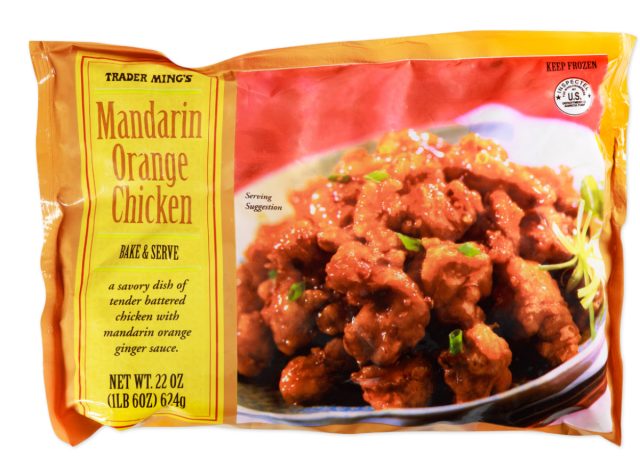

PER 1 CUP (140 G): 320 calories, 16 g fat (3.5 g saturated fat), 330 mg sodium, 24 g carbs (1 g fiber, 6 g sugar), 21 g protein
“Trader Joe’s Mandarin Orange Chicken is also a less healthy option in terms of frozen food items due to its added sugar content. It has 6 grams of added sugar per serving, and the fried breading has refined oils and flours that make this a less healthy option. For a healthier option, go for orange chicken without the fried coating and a sauce with fewer added sugars,” explains Wan Na Chun, MPH, RD.
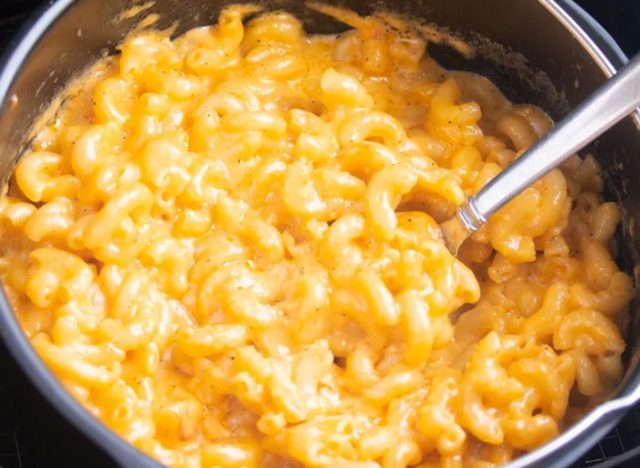

PER 1 CUP (198 G): 360 calories, 15 g fat (8 g saturated fat), 590 mg sodium, 42 g carbs (0 g fiber, 3 g sugar), 16 g protein
“At a glance, Trader Joe’s Diner Mac and Cheese might look like a simple, convenient meal to heat up for lunch or dinner. However, it’s important to read the servings per container. This 14-ounce box yields 2 servings, which together provides about 2 total cups of mac and cheese. The whole box will give you a whopping 80% of the daily value of saturated fat and 51% of the sodium. With those numbers, you’d be better off making your own at home, and controlling the amount of cheese you add to your cooked pasta,” says Madeleine Putzi, MS, RDN, CLC.
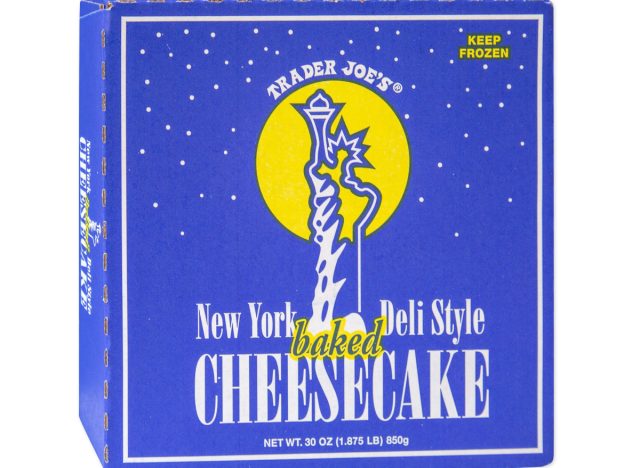

PER 1/10 CHEESECAKE (125 G): 400 calories, 28 g fat (17 g saturated fat), 220 mg sodium, 32 g carbs (0 g fiber, 23 g sugar), 7 g protein
Sheri Berger, RDN, CDCES shares her expert take on this frozen dessert item: “It should be no surprise that the Trader Joe’s New York Deli Style Cheesecake qualifies as one of the least healthy frozen items. With 23 grams of added sugar and 17 grams of saturated fat per slice, it tips the scales for nutrients we should limit. The American Heart Association recommends limiting added sugar to no more than 25 grams per day for women and 36 grams per day for men. For saturated fat, the AHA recommends limiting to no more than 5-6% of daily calories, which is about 13 grams per day for a 2000 calorie diet.”
Berger continues, “You would be better off choosing a Trader Joe’s Mini Hold the Cone Ice Cream for less than 100 calories and about 2 grams of saturated fat and 6 grams of added sugar per cone.”
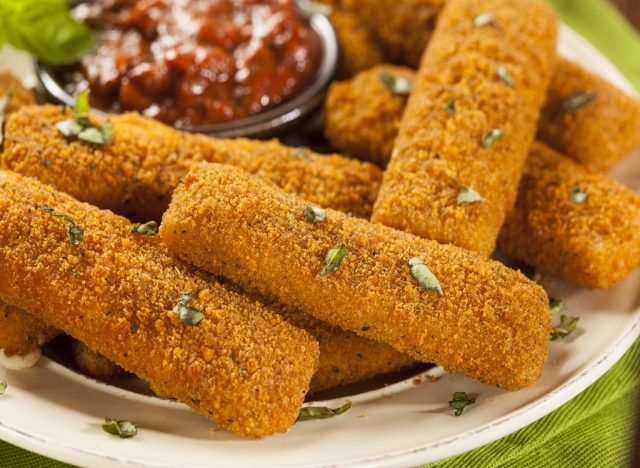

PER 2 PIECES (51 G): 190 calories, 12 g fat (5 g saturated fat), 320 mg sodium, 12 g carbs (0 g fiber, 0 g sugar), 9 g protein
Trader Joe’s offers a wide range of pre-packaged snacks or appetizers like their Breaded Mozzarella Cheese Sticks. While these frozen snacks are tasty, they are high in calories, unhealthy fats, and sodium. Enjoy them sparingly and consider healthier alternatives from the Trader Joe’s snack aisle such as their popcorn, peanut butter-filled pretzels, or just stick to string cheese!











